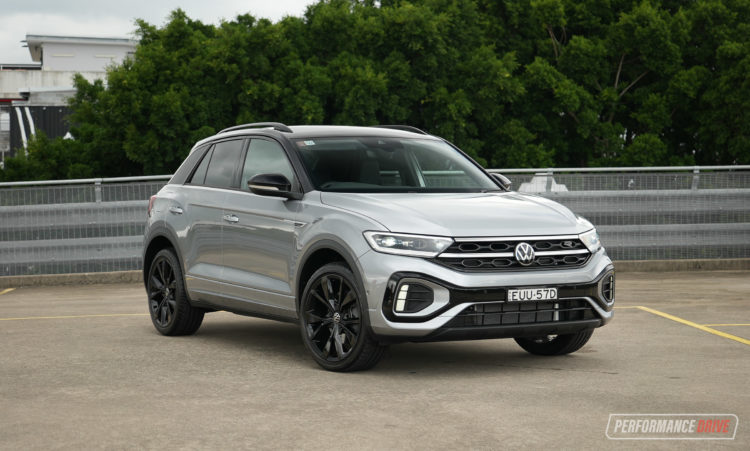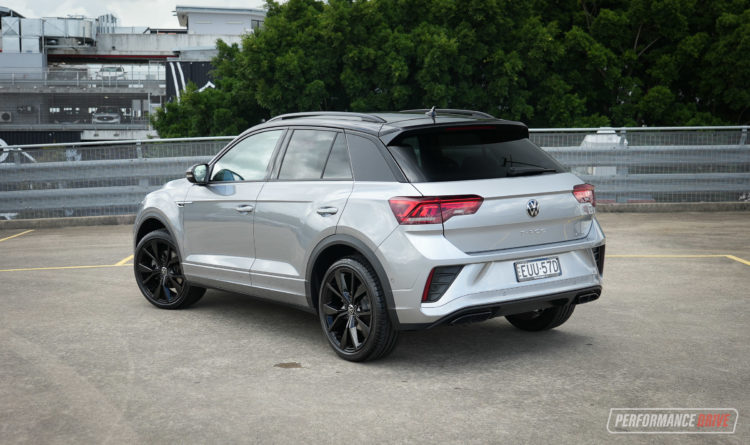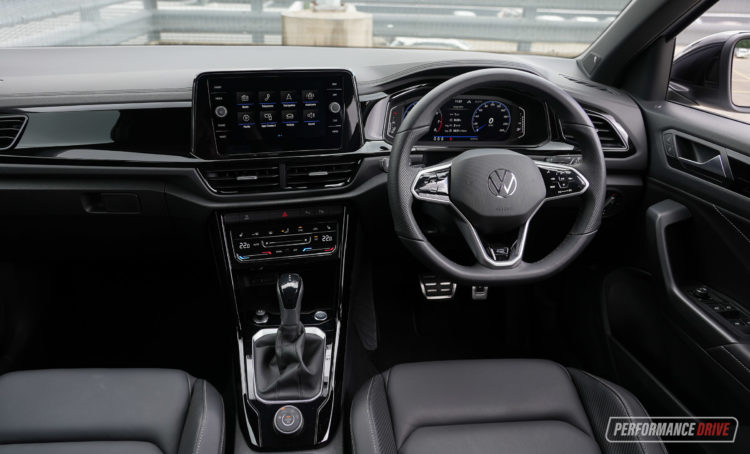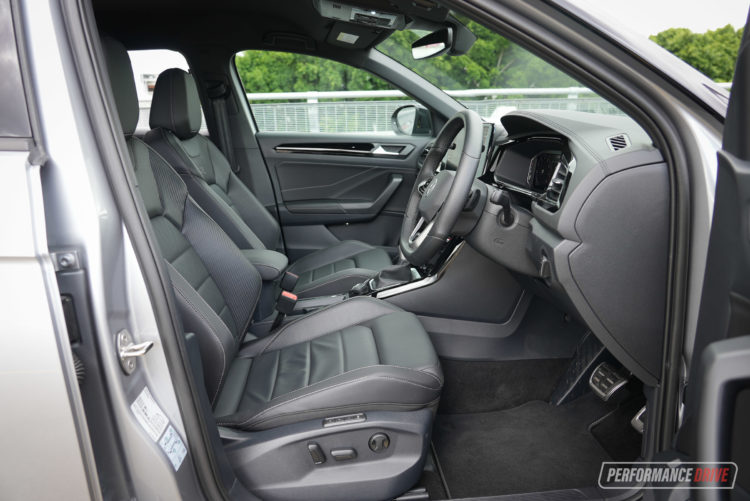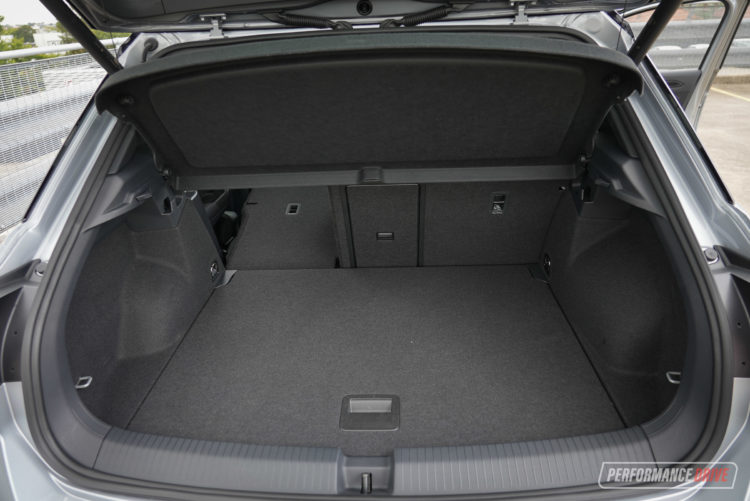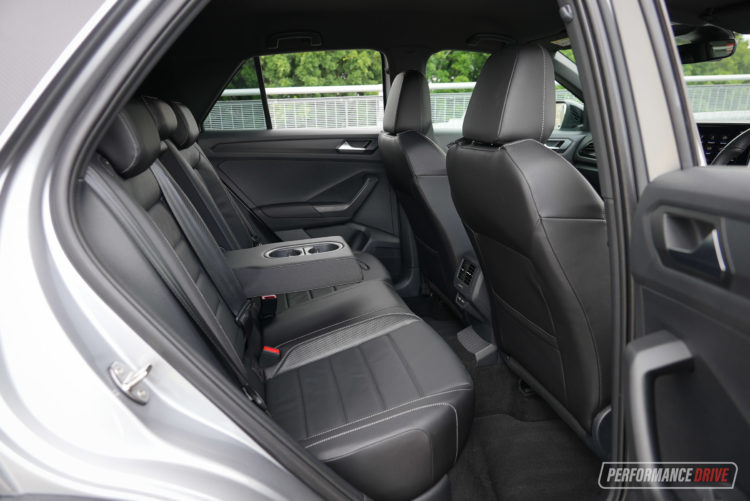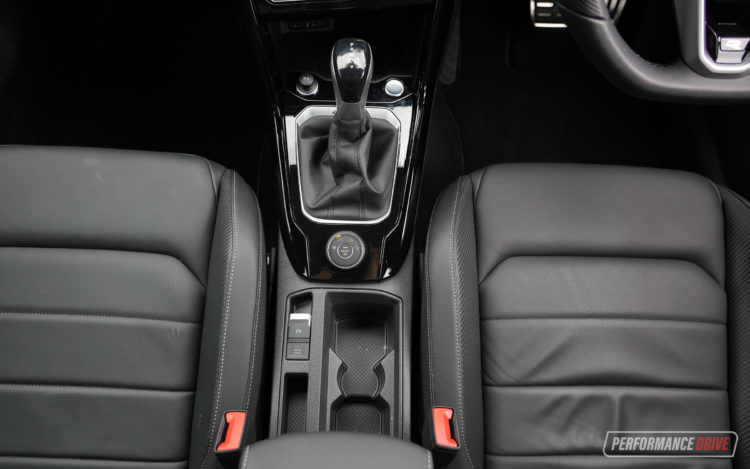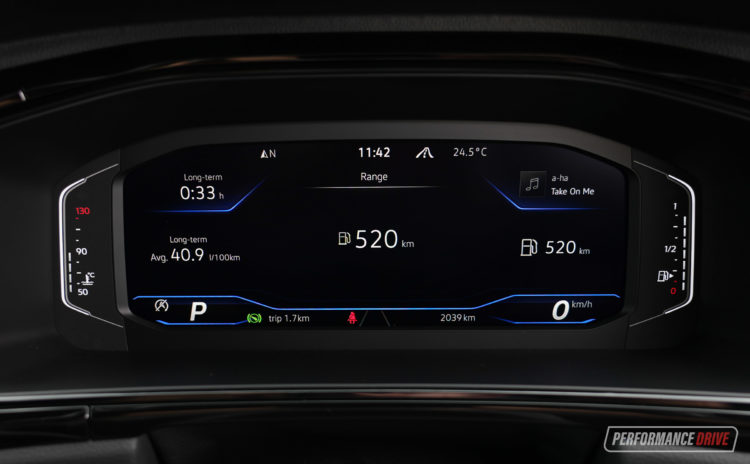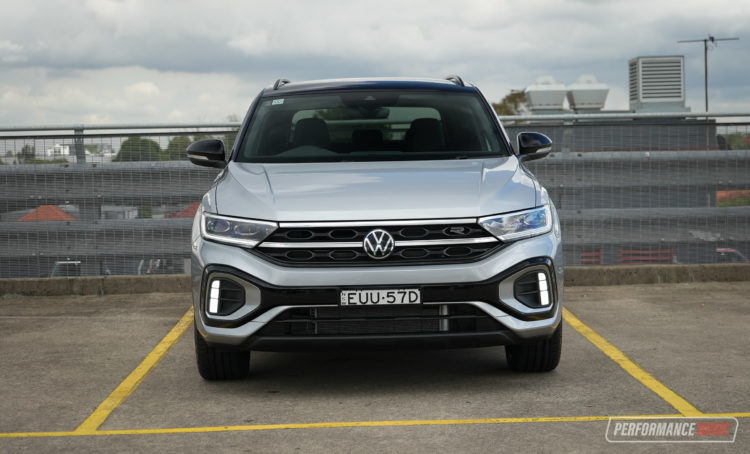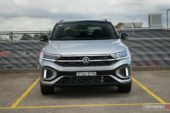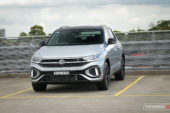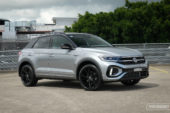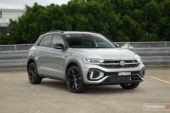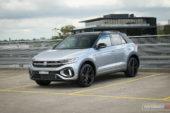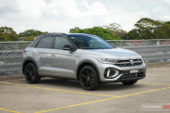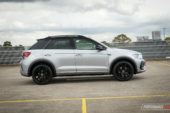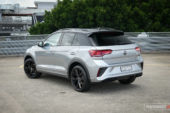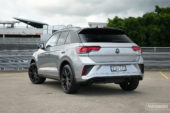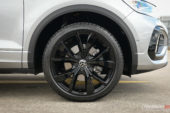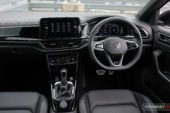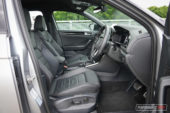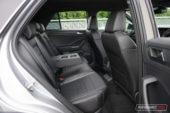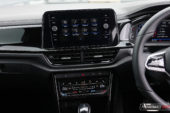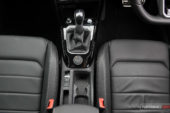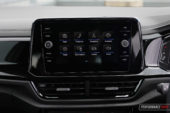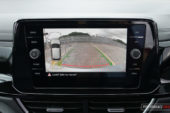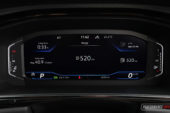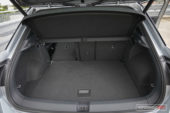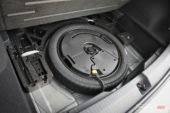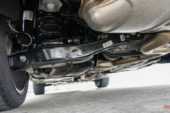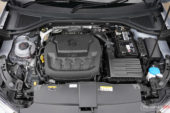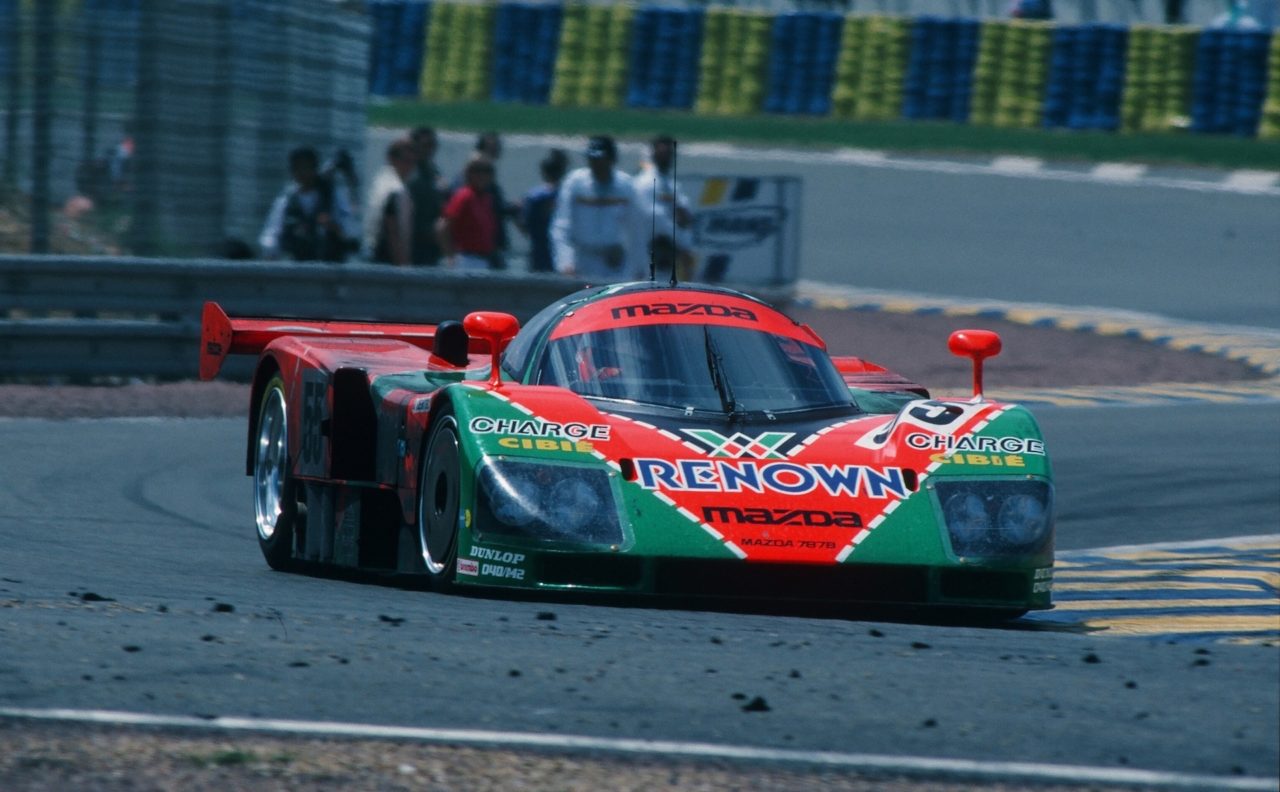Volkswagen was slow to the small SUV market, only adding the Portuguese-built T-Roc to its fleet in 2020. By this time, competitors like the Toyota C-HR, Hyundai Kona, Mitsubishi ASX and Subaru XV were well established with strong sales volumes. VFACTS numbers also indicate many buyers flock to the smaller T-Cross and the larger Tiguan.
While the T-Roc creeps closer to the top five with its 6 per cent market share of the small SUV under $45k class, it puts a very strong case forward as a stylish, practical and sporty proposition.
For 2023, the T-Roc comes in three drivetrains across four variants. The baseline 110TSI Style gets a front-wheel drive 1.4-litre, turbo four-cylinder petrol that produces 110kW/250Nm. Then the mid-spec 140TSI R-Line is fitted with a four-wheel drive 2.0-litre, turbo-petrol engine that develops 140kW/320Nm. At the top, the R and R Grid Edition are the ultimate hot hatches in SUV form with a 2.0-litre turbo that belts out 221kW/400Nm on all four wheels.
We’re excited to park our backsides into the 140TSI R-Line. It retails for $45,200 (excluding on-road costs). The cheapest T-Roc kicks off at $37,100 – about $6k more expensive than the cheapest T-Cross, and about $5k cheaper than the entry Tiguan.
For now, there are no hybrids to be seen, nor manual gearboxes. You get an eight-speed conventional torque converter auto in the base 110TSI, and a seven-speed dual-clutch auto in all other models.
2023 Volkswagen T-Roc 140TSI R-Line – THE SPECS
[column width=”47%” padding=”6%”]Engine: 2.0-litre turbo-petrol four-cylinder
Output: 140kW@6000rpm / 320Nm@1450-4200rpm
Transmission: Seven-speed dual-clutch auto
Drive type: All-wheel drive
Wheels: F & R: 18×7.0, 215/50
ANCAP: Five stars
Tare weight: 1540kg
Power-to-weight: 11:1 (kg:kW)
Official fuel economy: 7.3L/100km
Economy during test: 7.4L/100km[/column] [column width=”47%” padding=”0″]Fuel capacity/Type: 55L/95 RON
Power efficiency: 19.17kW:L/100km
0-60km/h: 3.10 seconds*
0-100km/h: 6.98 seconds*
60-110km/h: 5.34 seconds*
1/4 mile: 15.22 seconds at 147.6km/h*
Max acceleration: 0.890g*
100-0km/h braking: 3.08 seconds at 39.95 metres*
Max deceleration: -1.138g*
Decibel at idle: 42*
Peak decibel at 60-100km/h: 78*
Priced from: $45,200[/column][end_columns]
* Figures as tested by PerformanceDrive on the day. Factory claims may be different
2023 Volkswagen T-Roc 140TSI R-Line – THE PACKAGE
Volkswagen’s design language is always approached with elegance and subtlety. The T-Roc looks contemporary and sophisticated without looking too quirky. The front is shaped smoothly with a wide grille that smartly integrates into the cut of the LED headlights. Lower daytime running lights that are encased together in a contrasting glossy black section looks attractive.
Black wheel arches, chrome window top surrounds and roof rails dominate a strong looking midsection. Further back, the boot slopes more gradually than a Tiguan or a bigger SUV, giving it more of a hatchback look. Large LED taillights look striking, and characterise its Golf sibling. Likewise with the logo push boot release handle.
The classy theme continues within. Premium feel, soft-touch materials are littered throughout, and areas that are highlighted by brushed metal look stylish. There is also a fair bit of glossy black going on, which tends to show dust and fingerprints easily. You get plush and supportive Alcantara micro-fleece and cloth trim on the sports seats, and lumbar adjustment on both front seats. They are upgradable to Nappa leather.
You feel a real sense of digitisation around you thanks to a clear and well laid-out digital instrument cluster and a high-resolution 8.0-inch centre touch-screen with a finger proximity sensor and gesture control. It connects to a six-speaker sound system with wireless Apple CarPlay and wireless Android Auto, digital radio, and sat-nav. You can also upgrade to an optional Beats 300-Watt premium audio system, as tested here. It sounds neat. Thankfully, there are still dedicated touch sensitive air-con buttons that are not integrated into the touch-screen.
Underneath the air-con controls you’ll find a large storage hole with an integrated wireless charging pad. Other practical touches include lots of handy storage, and large door pockets and bottle holders. In terms of space, there is a commendable amount of room in the front row for this class. In the rear, legroom is decent for this size of SUV, but a squeeze for taller bodies, or three adults on a long trip. The bottoms of the rear doors are also a little narrow to lift your boots into. At least there are two USB-C charging ports (to make four altogether), air vents, and a pull-down centre armrest in the back.
Compared to the Style variant, the R-Line picks up a sports steering wheel with a flat bottom. But it does away with conventional steering wheel buttons and replaces them with one large glossy panel that doesn’t quite feel as intuitive to operate. Because your functions aren’t separated on individual buttons. Instead, you need to look down to make sure your finger is pressing the right area.
In the way of boot space, the T-Roc takes big strides among its main rivals. It offers 392 litres of volume and increases to 1237 litres if you fold the rear seats down. Due to the slanted rear end, space for taller items is slightly diminished. And the R-Line suffers a 53-litre loss over the base Style variant. To compare, the Toyota C-HR offers 318 litres, the Hyundai Kona fits 374 litres, the Mitsubishi ASX squeezes in 393 litres, and the Subaru Crosstrek swallows 291 litres.
All T-Roc models inherit a substantial list of safety tech and features as standard. You get low and high speed crash avoidance control with braking and pedestrian avoidance, reverse collision mitigation, lane keeping aid, lane departure warning, front and rear parking sensors, automated steering parking assistance, adaptive cruise control with lead vehicle alert, dual-zone climate control with a humidity sensor, keyless proximity entry, ambient interior lighting, auto high beam with cornering lamps, 18-inch alloy wheels, rain-sensing wipers, tyre pressure sensors, auto-dipping side mirrors when reversing, paddle shifters, and selectable driving modes.
Opting for the R-Line will grant you the more advanced Digital Cockpit Pro, Discover Media sat-nav, voice control, wireless app-connect, that sports leather steering wheel, front fog lights, R-Line exterior and interior trimmings, sports suspension, progressive steering, and that higher performance powertrain with 4MOTION all-wheel drive and electronic diff lock.
Volkswagens are not the cheapest to maintain compared to other brands like Toyota or Mitsubishi. But at least it offers set-price prepaid servicing to give you some assurance. Servicing for five years is currently set at $2850, or 3 years for $1700. Services are required every 12 months or 15,000km and you get a five-year, unlimited kilometre warranty.
2023 Volkswagen T-Roc 140TSI R-Line – THE DRIVE
If you care about power, upgrading to the 140TSI R-Line is a must. The engine provides enough thrust to thrill. It’s excellent that Volkswagen offers a few different engines to match your exhilaration needs – and the 140TSI is a perfect placement in the middle of the range. It supplies the goods with plenty of low-end torque and respectable top-end punch. Volkswagen claims 0-100km/h in 7.2 seconds and we clocked it in a dashing 6.98 seconds.
The combination of its 1540kg lightness and an engine that produces maximum torque from a low 1450rpm makes for a setup that feels sporty, free-revving, and willing. Adding to that, the seven-speed dual-clutch auto gearbox offers a more raw and captivating experience than increasingly popular CVT autos.
You also gain the benefit of Volkswagen’s 4MOTION all-wheel drive in the 140TSI. This means you get better traction at all speeds in bad weather or off-road. Volkswagen explains that when operating under light load or when coasting, power is largely distributed to the front wheels to keep fuel consumption down. But the rear wheels can be variably engaged in fractions of a second before any wheel starts to lose traction. Which also improves traction for fast take-offs.
With the lack of fuel-saving hybrid tech you might assume that the T-Roc is not a good option for your wallet. But it’s not as bad as you might think. Yes, consumption is slightly higher than hybrid offerings, but it’s one of the few cars that easily achieves the official advertised average. It officially burns 7.3L/100km. During our 650km of driving in the city and on freeways, we averaged 7.4L/100km. Definitely a figure worth paying for considering the enthusiastic engine you get. Though, it requires a minimum of premium 95 RON fuel for its meal.
On the road, the T-Roc has a spring in its step thanks to a lightweight feel, and tight, direct steering that adjusts according to speed. As a result, keeping it in the lane is effortless, and negotiating tight parks is as simple as they come. Underneath, it has independent MacPherson struts with lower A-arms and an anti-roll bar at the front. The rear is upgraded from a torsion beam axle to independent, four-link suspension with coil springs and another anti-roll bar for the AWD models. The sports springs are also firmer compared to the 110TSI Style spec.
All of this translates to a small SUV that feels more like a sporty hatch around corners. It has nominal body roll and is not swayed by sudden shifts in direction. It helps that it has a low 155mm ground clearance; lower than most of its competition, and only 21mm higher than the Golf 110TSI R-Line. Still, going over bumps and bouncing over rough country roads is a calm and stable affair, possessing a great balance between sporty agility and springy comfort.
Lower profile tyres and that low ground clearance means the T-Roc is better suited to bitumen than off-roading. But it will happily travel along light dirt roads with selectable driving modes to match.
You can upgrade to Volkswagen’s Adaptive Chassis Control, which offers electrically controlled dampers that constantly adjust to the road conditions, the driving situation and driver’s requirements in line with the driving profile selected – normal, comfort and sport. This is a rare offering in a small SUV, considering it is not even the sportiest variant on offer.
2023 Volkswagen T-Roc 140TSI R-Line – THE VIDEO
2023 Volkswagen T-Roc 140TSI R-Line – THE VERDICT
The T-Roc 140TSI R-Line impresses with its powertrain and dynamics, meaning you don’t necessarily need to step up to the fully-fledged R model. And even though hybrid technology is now a common solution in the automotive world, Volkswagen demonstrates that efficiencies can still be extracted from a conventional engine setup.
It also offers a tech-filled, practical interior with loads of safety and comfort features. But, like with most things these days, it is pricey for a small SUV. Other brands have lower starting prices, which will likely continue to prevent the T-Roc from entering the top five.
[column width=”47%” padding=”6%”]PROS:
– Spritely and sporty engine with a spring in its step
– Not a terrible real-world fuel consumption; we averaged 7.4L/100km
– Handling and dynamics feel more sporty hatch than SUV
– Elegant but subtle design
– Plenty of variety in the range[/column] [column width=”47%” padding=”0″]CONS:
– Pricey among the competition
– Lack of hybrid offerings might hinder sales numbers
– Premium fuel requirement[/column][end_columns]
As always, if you’re thinking about buying a new car don’t forget to click here to speak with our car buying specialists.
